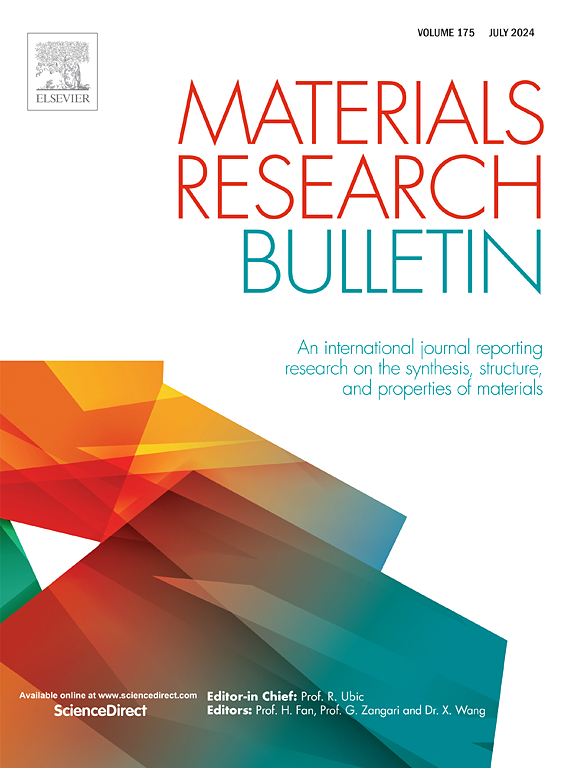可扩展二维材料合成的进展:闪光焦耳加热及其他
IF 5.3
3区 材料科学
Q2 MATERIALS SCIENCE, MULTIDISCIPLINARY
引用次数: 0
摘要
闪速焦耳加热(FJH)利用各种含碳废物,如垃圾、生物质、塑料和煤,以可扩展、低能耗和绿色的方式生产高质量的二维材料,如涡轮闪速石墨烯。与传统方法不同,FJH在几毫秒内产生瞬时加热(高达3000 K),无需催化剂、溶剂或任何额外能量即可直接实现碳转化。所得石墨烯具有优异的结构、热学和电化学性能,纯度≥95 at。%碳,由x射线光电子能谱测定,杂原子杂质(如氧、氮、硫)最少。该方法还允许形态调整和孔隙度控制,因此它可以在储能、复合材料、电催化和环境净化中找到应用。与传统合成技术相比,生命周期和技术经济评估证实了温室气体排放,水的使用和生产成本的节约。它与机器学习的结合进一步鼓励了工艺优化和材料质量,精确地预测了产量和结晶度。FJH将低价值废物转化为高价值纳米材料的能力意味着它可以成为促进可持续非制造业和循环经济的中心点。本综述涵盖了基于fjh的石墨烯制造,并讨论了绿色技术的工业化和商业化趋势。本文章由计算机程序翻译,如有差异,请以英文原文为准。

Advances in scalable 2D material synthesis: Flash Joule heating and beyond
Flash Joule Heating (FJH) utilizes a variety of carbonaceous waste, such as garbage, biomass, plastic, and coal, to produce high-quality 2D materials, such as turbostratic flash graphene, in a scalable, low-energy, and green route. Unlike conventional strategies, FJH produces instantaneous heating (up to 3000 K) in milliseconds, enabling carbon conversion directly without the need for catalysts, solvents, or any additional energy. The obtained graphene exhibits excellent structural, thermal, and electrochemical performance, with high purity defined as ≥95 at.% carbon, as determined by X-ray Photoelectron Spectroscopy, and with minimal heteroatom impurities (e.g., oxygen, nitrogen, sulfur). The approach also allows morphological adjustment as well as control over porosity, and therefore it can find application in energy storage, composites, electrocatalysis, and environmental clean-up. Life cycle and techno-economic evaluation confirms drastic greenhouse gas emission, water usage, and production cost savings in comparison with the traditional synthesis technique. Its coupling with machine learning has further encouraged process optimization and material quality, precisely predicting yield and crystallinity. FJH's capability to convert low-value waste into high-value nanomaterials means that it can become a central point in promoting sustainable nonmanufacturing and the circular economy. FJH-based manufacturing of graphene has been covered within this review which also discusses the trend toward industrialization and commercialization of green technology.
求助全文
通过发布文献求助,成功后即可免费获取论文全文。
去求助
来源期刊

Materials Research Bulletin
工程技术-材料科学:综合
CiteScore
9.80
自引率
5.60%
发文量
372
审稿时长
42 days
期刊介绍:
Materials Research Bulletin is an international journal reporting high-impact research on processing-structure-property relationships in functional materials and nanomaterials with interesting electronic, magnetic, optical, thermal, mechanical or catalytic properties. Papers purely on thermodynamics or theoretical calculations (e.g., density functional theory) do not fall within the scope of the journal unless they also demonstrate a clear link to physical properties. Topics covered include functional materials (e.g., dielectrics, pyroelectrics, piezoelectrics, ferroelectrics, relaxors, thermoelectrics, etc.); electrochemistry and solid-state ionics (e.g., photovoltaics, batteries, sensors, and fuel cells); nanomaterials, graphene, and nanocomposites; luminescence and photocatalysis; crystal-structure and defect-structure analysis; novel electronics; non-crystalline solids; flexible electronics; protein-material interactions; and polymeric ion-exchange membranes.
 求助内容:
求助内容: 应助结果提醒方式:
应助结果提醒方式:


